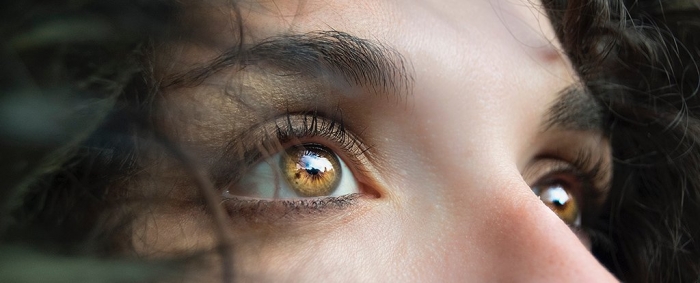Scientists from the University of Pennsylvania investigated the properties of the pigment melanopsin in the hope of finding whether its stimulus could be 'seen' by the part of the brain responsible for building pictures of our surroundings.
"Melanopsin is a part of our visual system from long ago in evolution, and it controls several important biological responses to light," says lead researcher Manuel Spitschan, who is now at the University of Oxford.
One example is its role in opening and closing the eye's shutters – or iris – according to the amount of blue spectrum light it receives. The pigment's response to light intensity also helps keep the body's daily rhythm on track.
Until now, scientists haven't been sure if information from the retinal cells containing the pigment is sent to the brain's visual cortex.
"It has been hard to know if we have a visual experience that accompanies these reflexes, as any normal light that stimulates melanopsin will also stimulate the cone cells of the eye that support our regular vision," says Spitschan.
"We wouldn't know whether what a person sees arises from melanopsin or the cones."
For a bit of vision 101, the brain stitches together information sent from two types of cells in the eyeball. Rod cells contains pigments that sense the overall intensity of light. And cone cells that use pigments called 'opsins' to sense colour.
Each opsin responds to a part of the visible light spectrum, and the combined information is matched to specific colours in the brain. Thus our rods and cones act as the metaphorical 'pixels' in our brain's effort to deliver us a picture of the world as a seamless visual experience.
Among those pixels are a small number of receptor cells called intrinsically photosensitive retinal ganglion cells (ipRGCs), which contain melanopsin.
To see if they also contribute visual details, the researchers had to find a way to activate them without tripping any other light-detecting cells.
Previous research conducted by the team had already demonstrated a way forward; by tuning a spectrum of light to flicker at the right frequency, they could stimulate the melanopsin into acting without causing the cones to fire. And vice versa.
In effect, the pulses of light could be made invisible to the ipRGCs, or to the cone cells.
The researchers used this technique on four subjects, paying close attention to their pupils to confirm the pulses could be used to make it constrict.
Using a functional magnetic resonance imaging (fMRI) scan, they then found the pulses produced a response in the visual cortex.
"This was a particularly exciting finding," says researcher Geoffrey K. Aguirre.
"A neural response within the occipital cortex strongly suggests that people have a conscious experience of melanopsin stimulation that is explicitly visual."
To get a good sense of what it feels like to have your melanopsin tickled with a bright pulse of otherwise invisible light, the researchers had another 20 volunteers undergo the procedure.
None of the subjects knew whether they were getting the melanopsin pulses or the cone-stimulating frequencies.
Each was asked to rate each trial using various qualifiers, such as whether it was bright or dim, and then invited to use their own descriptions in a post-session debrief.
That conscious experience, it turns out, isn't a particularly pleasant one.
Not only could the volunteers 'see' the melanopsin-stimulating pulse, they described it as an unpleasant, blurred brightening of their visual field. Some reported a colour tinge, such as green or orange.
What was merely unpleasant for the subjects could be an altogether uncomfortable experience for individuals with numerous ipRGCs or overly sensitive responses to melanopsin stimulation.
"Research in mice makes us think that melanopsin contributes to the sensation of discomfort from very bright light," says Aguirre.
"Subjects in our study found the melanopsin stimulus to be unpleasant, and people with photophobia may experience a stronger form of this response to melanopsin."
More about: #Vision
















































